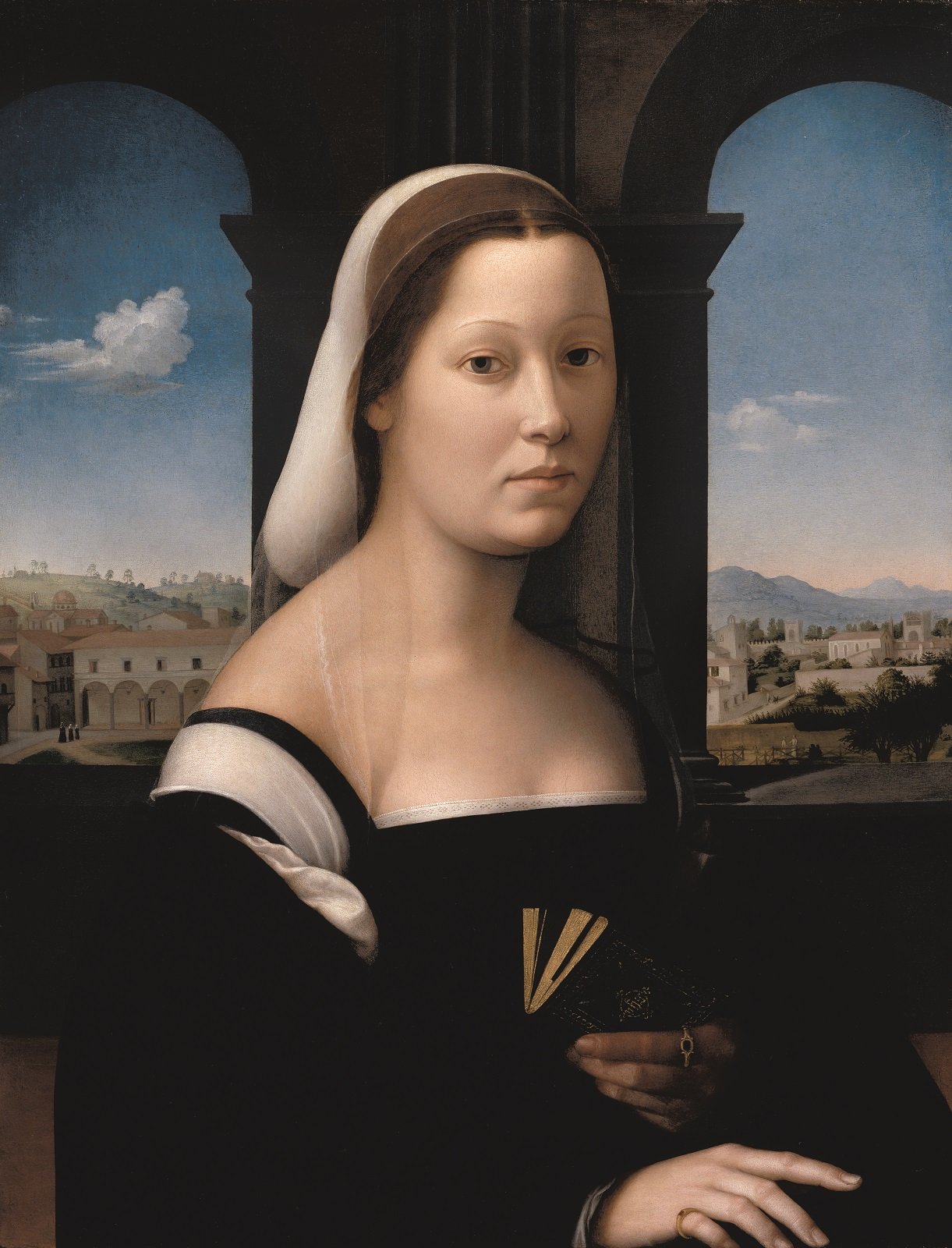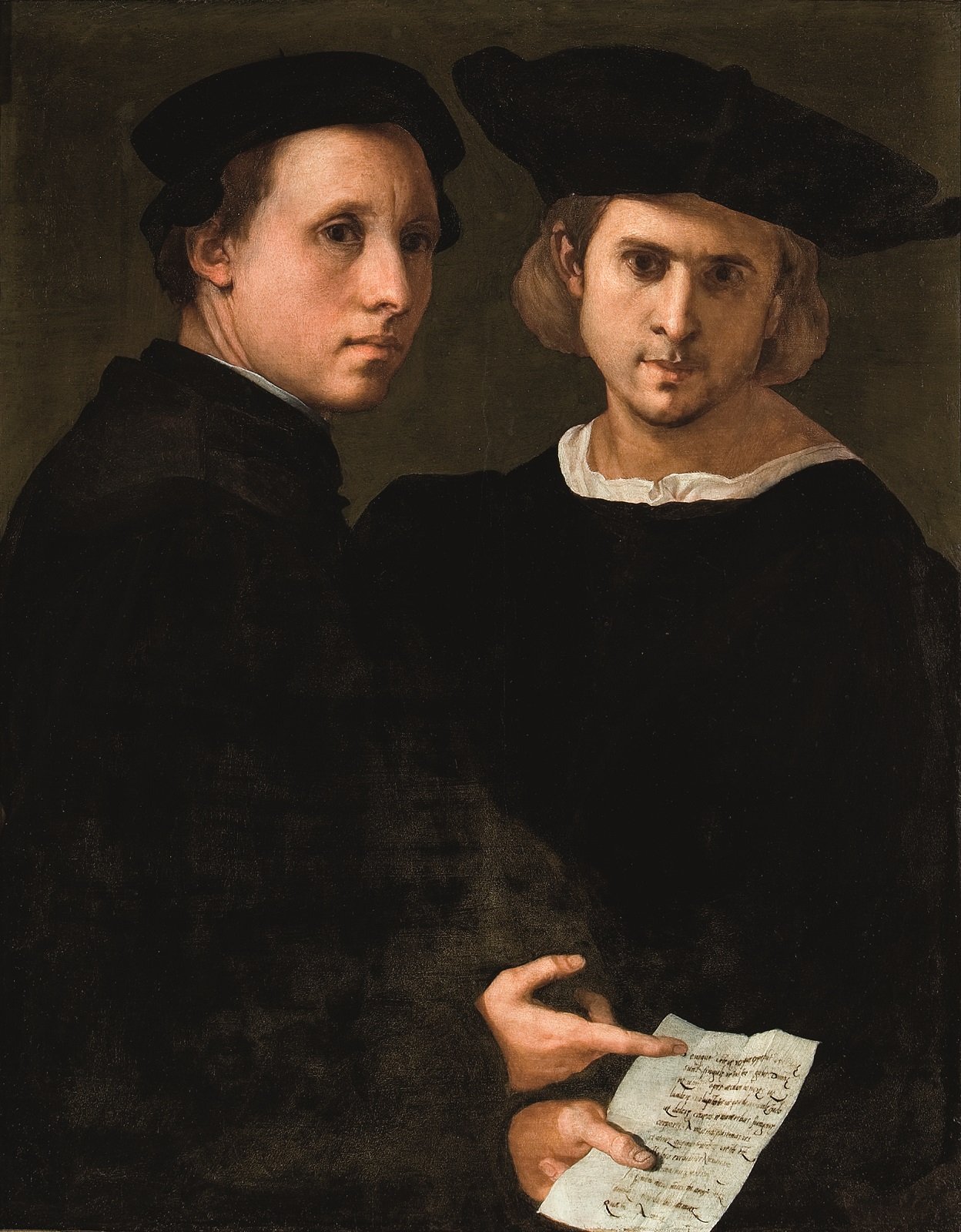“Florence, Portrait at the Medicis Court”: a seminal show that works better than any economic data
- Francesco Salviati (Francesco de’ Rossi, dit) Florence, 1510 – Rome, 1563 Portrait d’un jeune homme accompagné d’une biche Vers 1545–1548, huile sur bois, 88,5 × 68,5 cm Vaduz-Vienne, Les collections princières Liechtenstein © LIECHTENSTEIN. The Princely Collections, Vaduz–Vienna.
- Francesco Salviati (Francesco de’ Rossi, dit) Portrait d’un luthiste 1527-1530, huile sur bois, 96 x 77 cm Paris, Musée Jacquemart-André – Institut de France © Paris, Musée Jacquemart-André – Institut de France / Studio Sébert
- Jacopo Pontormo (Jacopo Carucci, dit) Pontorme, 1494 – Florence, 1557 Portrait d’un joueur de luth, Vers 1529-1530, Huile sur bois Collection Particulière © Eckart Lingenauber
- Rosso Fiorentino (Giovanni Battista di Jacopo dit) 1494 – 1540 Portrait d’homme, 1520-1522, Huile sur bois, Florence, Galleria Palatina © S.S.P.S.A.E e per il Polo Museale della città di Firenze
- Bronzino (Agnolo di Cosimo, dit) Florence, 1503 – 1572 François de Médicis, 1555-1565, Huile sur étain, Florence, Galleria degli Uffizi © S.S.P.S.A.E e per il Polo Museale della città di Firenze
- Fra’ Bartolomeo, 1472 – 1517 Portrait de Savonarole, 1498-1499, Huile sur bois, 53 x 37,5 cm, Florence, Musée de San Marco © S.S.P.S.A.E e per il Polo Museale della Città di Firenze
- Andrea del Sarto Portrait d’une femme en jaune vers 1529-30, huile sur toile, 65 x 50 cm, Londres, Windsor Royal Collection © Royal Collection Trust / © Her Majesty Queen Elizabeth II 2015
- Santi di Tito et atelier Florence, 1536 – 1603 Portrait de Marie de Médicis 1600, huile sur toile, 193,5 x 109 cm Florence, Istituti museali della Soprintendenza Speciale per il Polo Museale Fiorentino, Galleria Palatina © S.S.P.S.A.E. e per il Polo Museale della Città di Firenze
- Bronzino (Agnolo di Cosimo, dit) et atelier Florence, 1503 – 1572 Portrait de Cosme Ier de Médicis 1555–1565, huile sur étain, 16 × 12,5 cm Florence, Istituti museali della Soprintendenza Speciale per il Polo Museale Fiorentino, Galleria degli Uffizi © S.S.P.S.A.E. e per il Polo Museale della Città di Firenze
- Francesco Salviati (Francesco de’ Rossi, dit) Florence 1510 – Rome 1563 Portrait de Jean des Bandes Noires 1546–1548, huile sur bois, 65 x 46 cm Florence, Istituti museali della Soprintendenza Speciale per il Polo Museale Fiorentino, Palazzo Pitti, Galleria Palatina © S.S.P.S.A.E. e per il Polo Museale della Città di Firenze
- Ridolfo del Ghirlandaio (Ridolfo Bigordi, dit) Florence, 1483 – 1561 Dame au voile (La Monaca) 1510–1515, huile sur bois, 65 x 48 cm Florence, Istituti museali della Soprintendenza Speciale per il Polo Museale Fiorentino, Galleria degli Uffizi © S.S.P.S.A.E. e per il Polo Museale della Città di Firenze
- Giorgio Vasari Arezzo, 1511 – Florence, 1574 Portrait d’Alexandre de Médicis devant la ville de Florence Vers 1534, huile sur bois, 157 x 114 cm Florence, Istituti museali della Soprintendenza Speciale per il Polo Museale Fiorentino, Galleria degli Uffizi © S.S.P.S.A.E. e per il Polo Museale della Città di Firenze
- Jacopo Pontormo (Jacopo Carucci, dit) Pontorme, 1494 – Florence, 1557 Double Portrait Vers 1522–1523, huile sur bois, 88,2 x 68 cm Venise, Fondazione Giorgio Cini © Venezia, Fondazione Giorgio Cini, Matteo De Fina
- Bronzino (Agnolo di Cosimo, dit) Florence, 1503 – 1572 Portrait d’une dame en rouge Vers 1525–1530, huile sur bois, 89,8 x 70,5 cm Francfort-sur-le-Main, Städel Museum © Städel Museum – U. Edelmann / ARTOTHEK.
- Bronzino (Agnolo di Cosimo, dit), Florence, 1503 – 1572. Portrait d’Eléonore de Tolède, 1522, Huile sur bois Prague, NárodnÍ Galerie © National Gallery of Prague 2014.
Any art historian or museum director is perfectly aware of how difficult it could be to get loans from private collections such as those of the Queen of England or the Prince of Liechtenstein, and to persuade art institutions like the Uffizi, Palazzo Barberini, the Narodni Galerie, or the Staedel Museum to deprive their rooms of unique art masterpieces such those currently exhibited at the Musée Jacquemart André in Paris under the title “Florence, Portrait at the Medicis Court” (until 25th January).
The intense lady painted by Andrea del Sarto between 1529 and 1530; the young men with a dog by Salviati (1545-1548); or the double portrait by Pontormo (1522-1523), just to name a few. It took indeed three years and a high degree of diplomatic skills to have all these paintings together in the same building. “The Jacquemart Andrè got in touch with me after my show dedicated to Bronzino – said to Cfa Carlo Falciani curator of the show – asking for a remake of the exhibition. But that would have been impossible so I proposed them something that has never been done before: a show focused on portraits by Florentine painters at the time of the Medicis”. The path Falciani decided to follow was very narrow, as the second room of the show, the most difficult one to handle according to the curator himself, clearly proves. “The story I want to tell trough the paintings is that of Florence” continues Falciani, who in this pivotal room has been able to gather all the few high quality portraits of a Medici in arms, including that of Alessandro de’ Medici by Vasari (Uffizi), of Stefano Colonna by Bronzino (Palazzo Barberini, Rome), and of Giovanni Dalle Bande Nere by Salviati (Galleria Palatina, Florence).
These are exactly the kind of pieces making people travelling from all over the world to see them in flesh. Or the same pieces for which a sovereign states, or that wealthy 0,01 percent of the population with no limit of budget (Stieglitz), would spend a fortune to purchase.
But even a fortune would not be enough, since works of art of this kind are generally not on the market. The Italian Constitution still prevents museums to sell them (and lucky private owners of works of this kind to take them out of Italy), while with regards to those in the hands of monarchs there are even less chances they will be alienated since old monarchies who have survived the Second World War seems today in a quite good shape. And that is the main goal of this show: it makes you realize that the same great economical, political and intellectual power these works of art mirrored half of a millennium ago is today perfectly represented by the simple fact of owning these pieces. Thanks to their inaccessibility – and not just for their extraordinary artistic quality’s sake – these objects are still the evidence of the inner structure on which European society is based.
Moreover, while visiting the show, and maybe trying to read the body language talked by the characters’ hands, eyes, legs and postures, the visitor should bear in mind the Medicis were all contemporary art collectors, supporting living artists to pursue their political aims. “That approach to culture is comparable to how America did with abstract painting after the Second World War, or with movies during the Hollywood golden age or, nowadays, with Google and Facebook” asserts Falciani – who as an art historian specialized in Renaissance Italian art proves to be aware of the present time by confessing that a screen broadcasting images of contemporary artworks inspired by Florentine portraits was in the original project of the show. He also points out that only at the dawn of their splendour, thus at the end of the XVI century, the Medicis started to collect the old masters of their time, as Raphael or Leonardo.
On the contrary, those art collections, private or public, that nowadays have the privilege to preserve these pieces are generally not affected by these artwork’s original meaning, and most of the time are also using very different tools to pursue the same goals the powerful Medicis were seeking at their time. These paintings are not just gesture transponders proving the talent of the artist anymore, nor the “magnificence” of the patrons, nor the propaganda devices promoting that specific order of the world Lorenzo or Cosimo de’ Medici would have liked to establish. These functions are lost. But to a sensitive mind of our time these relatively small circle of Florentine people and their courtiers will immediately give something else: the real dimension of capitals that owns them.
October 9, 2015















